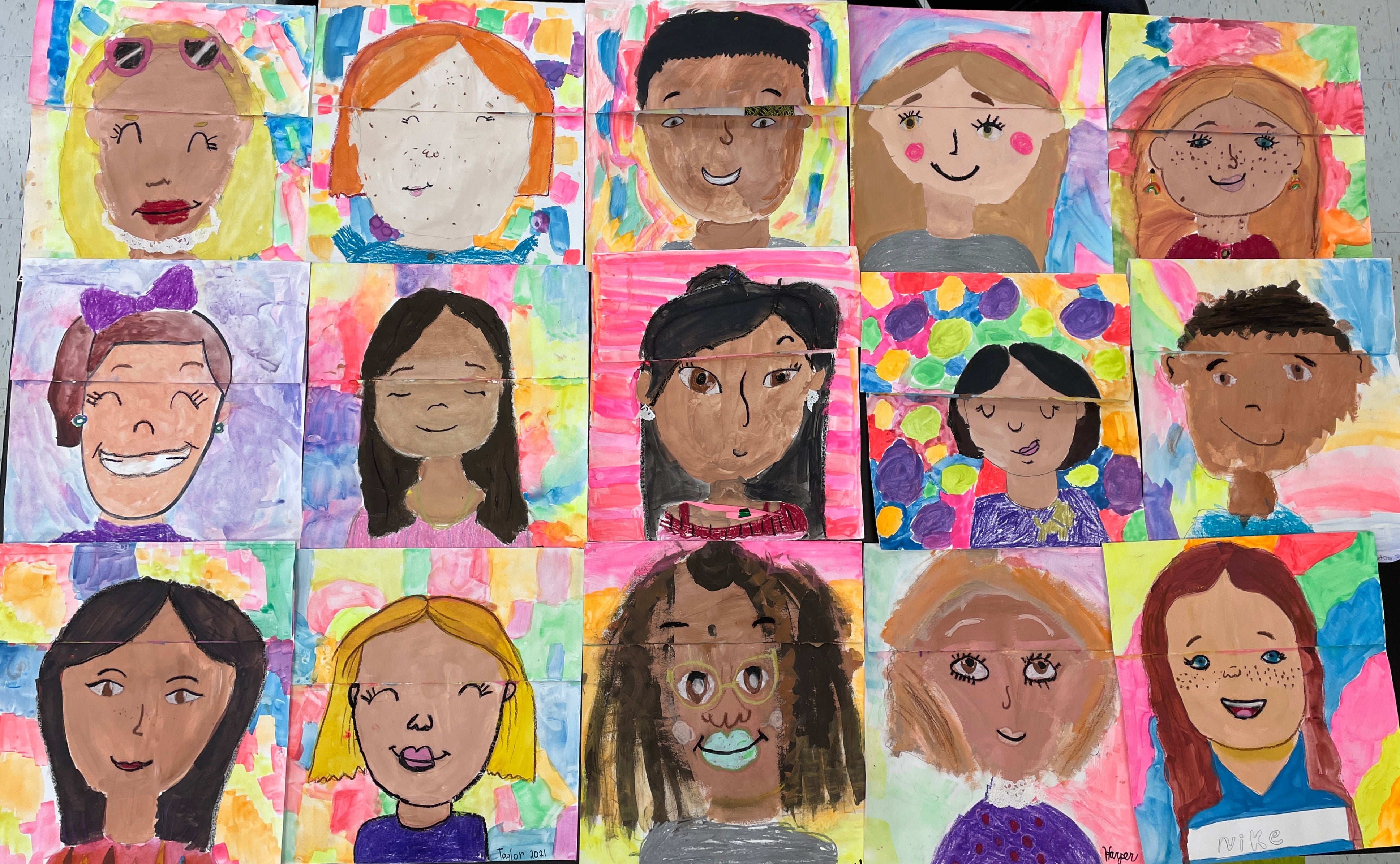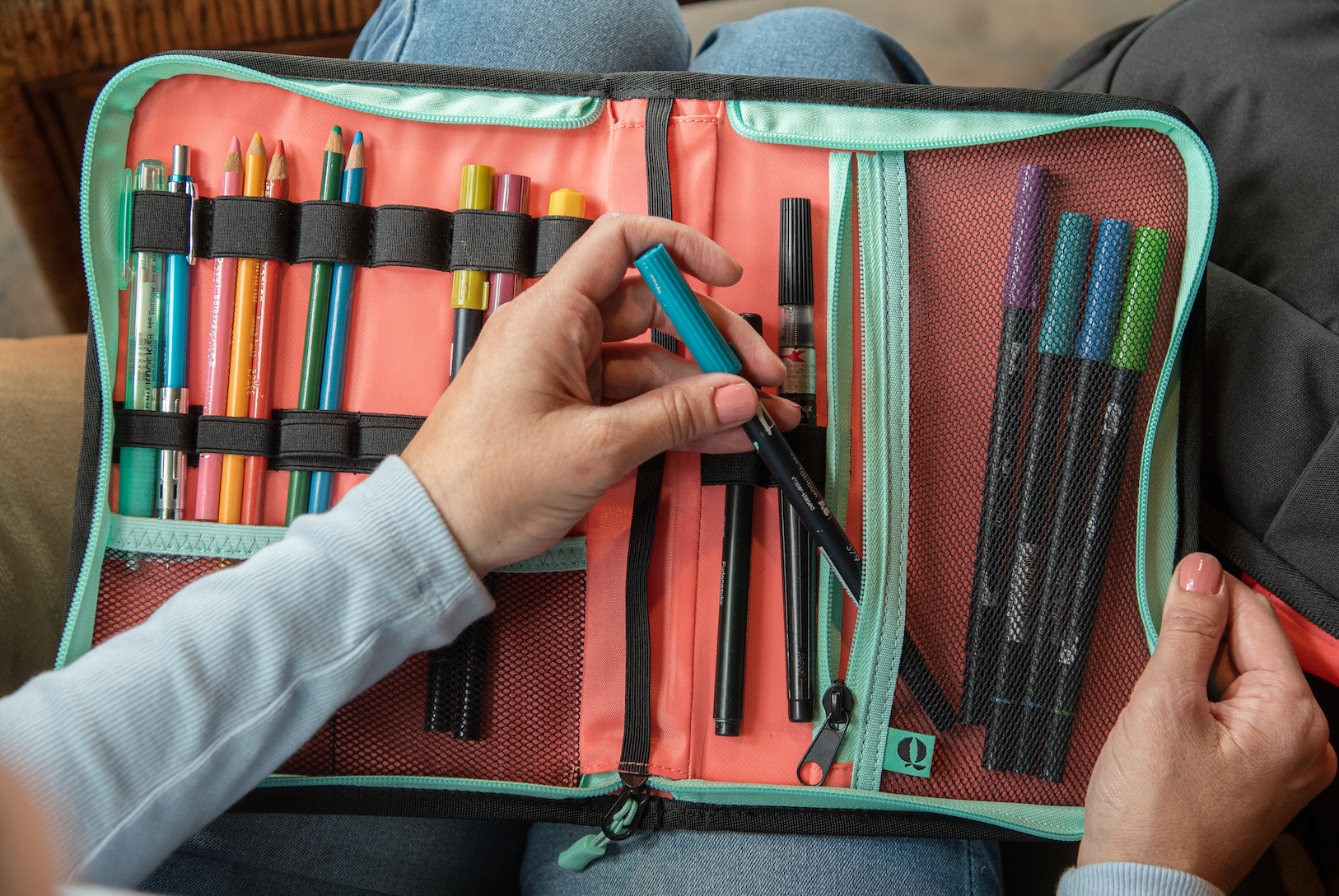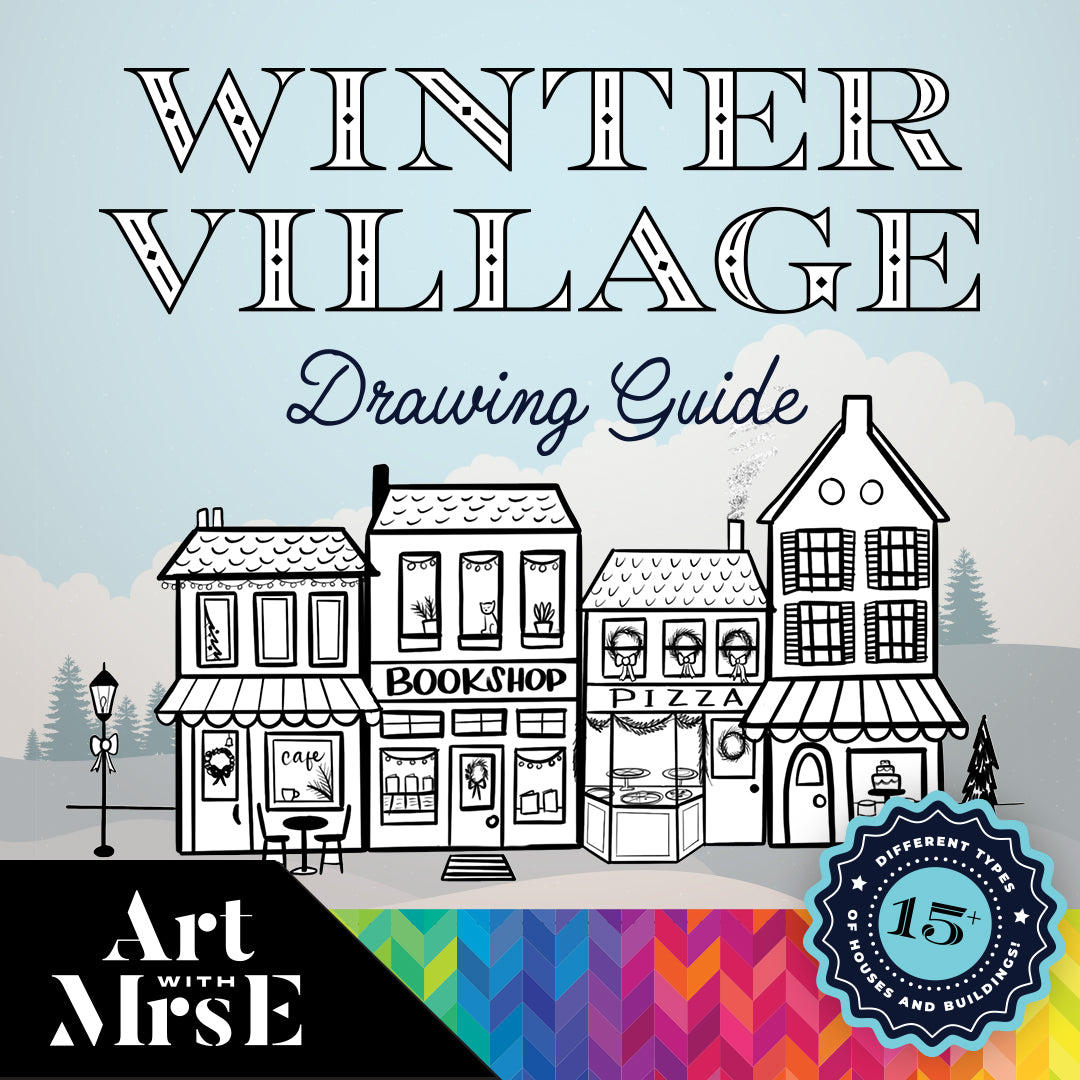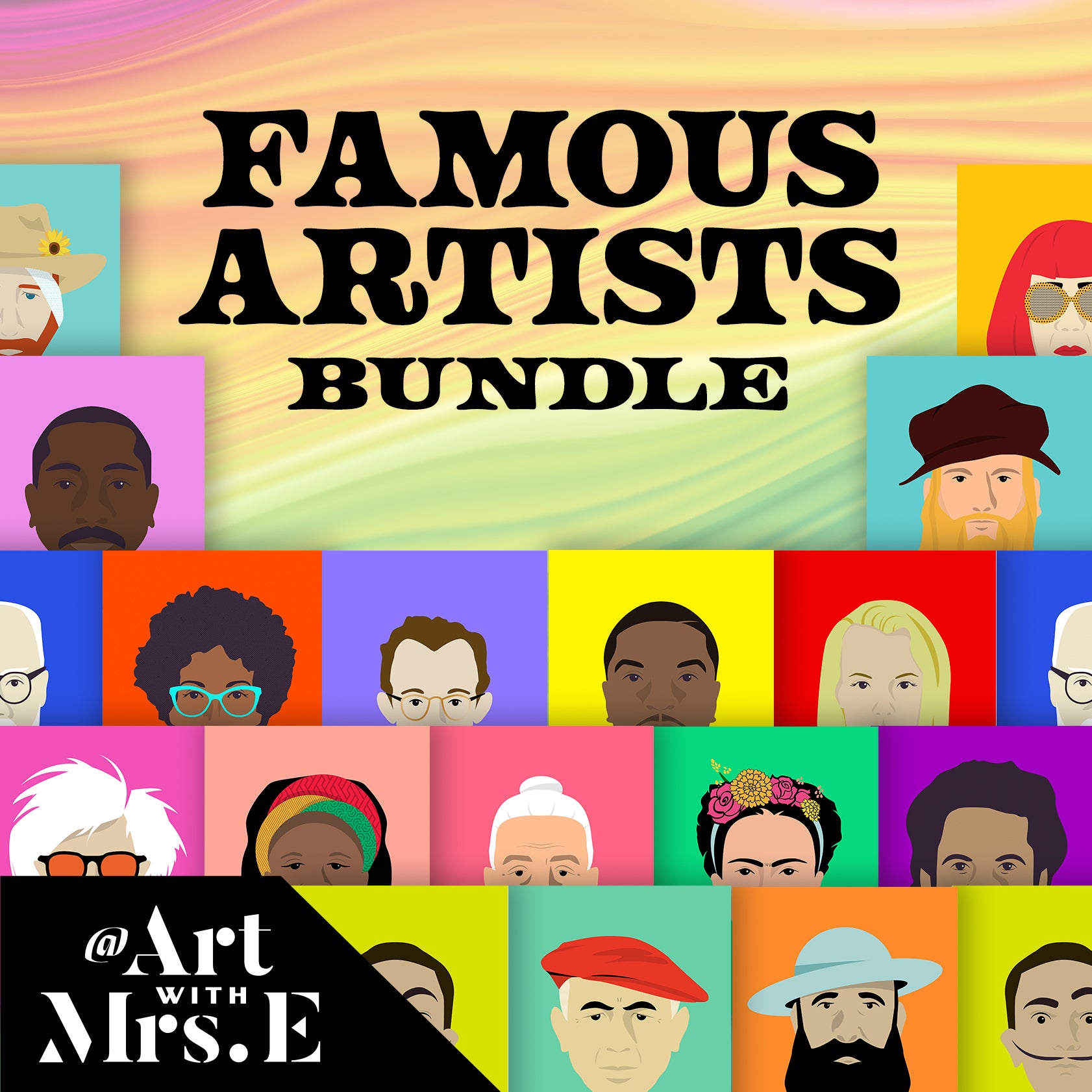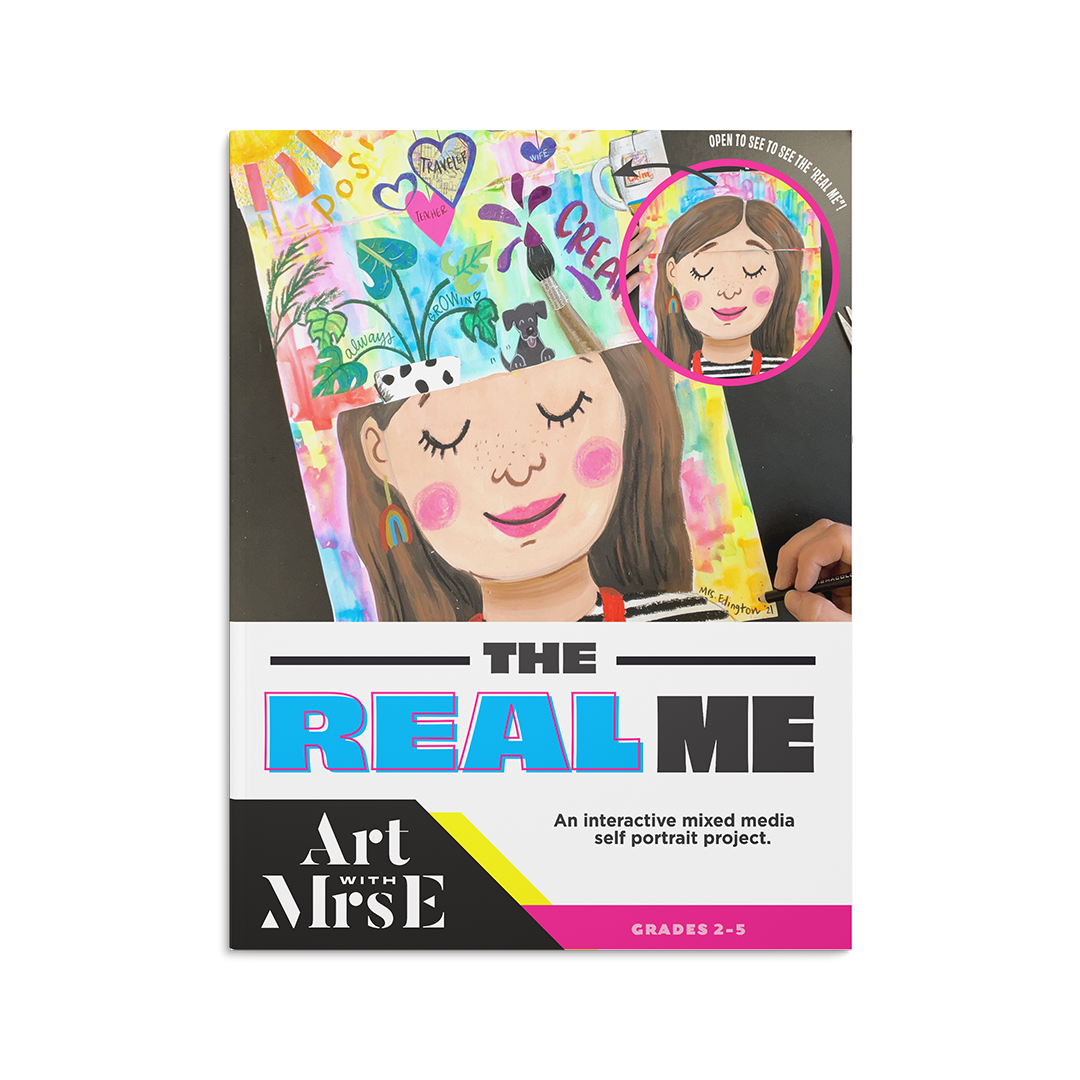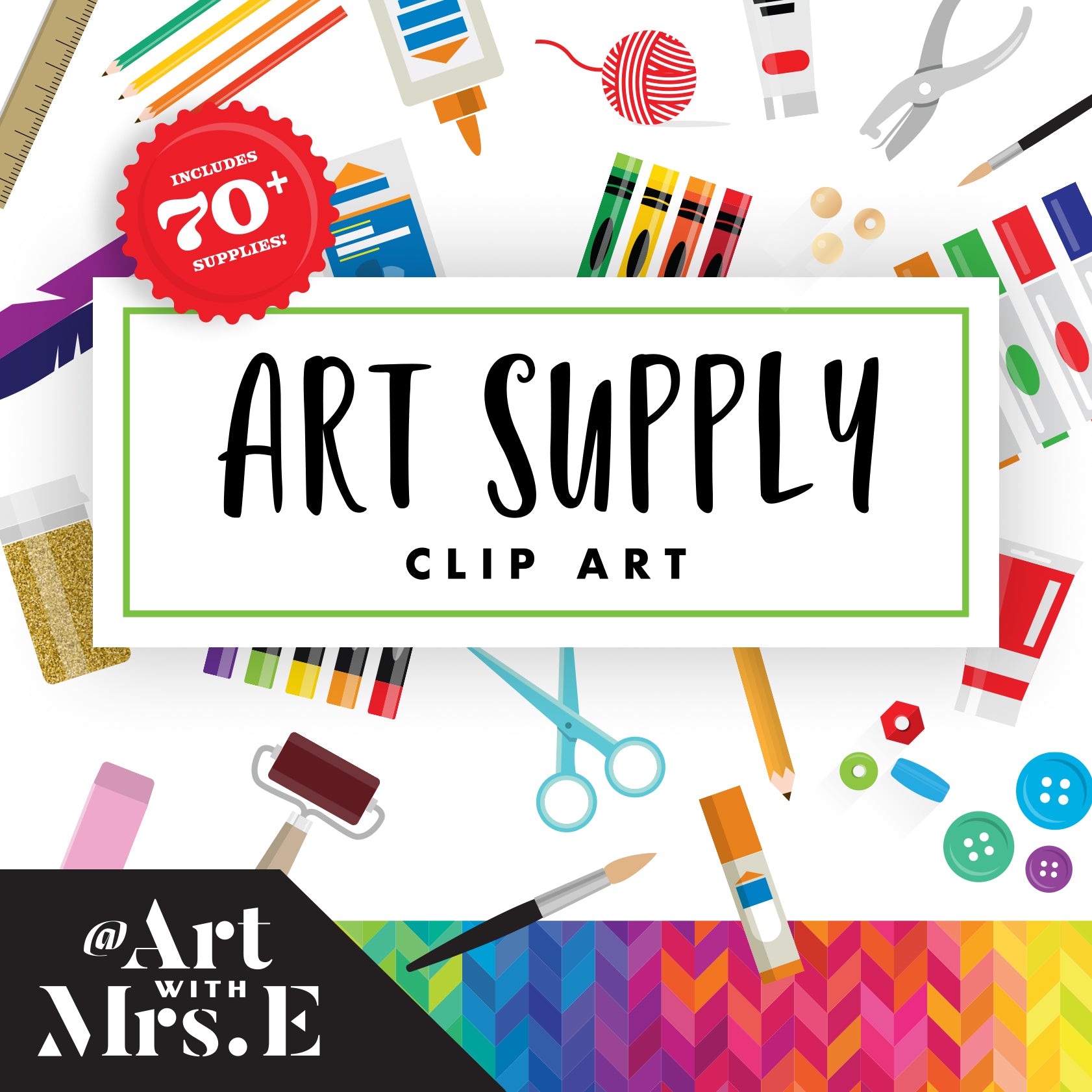Blog
Life Update 🖤
Hey friends. As many of you have been getting your classrooms together and planning your first few lessons for the start of the year, I have been a bit more quiet during this “back to school season”. While this has felt a bit nerve wracking, I wanted to take a moment to share with you all that I have decided to step into a new chapter of my life, by stepping out of the classroom. What do you do when you have your dream job that has a gorgeous classroom, the best coworkers, and incredible students & families… but your heart is still heavy? When the stresses of being a full-time working mom have only been intensified by teaching through a pandemic? When your work/ life balance has simply become a total imbalance? I’ve made a lot of big and bold decisions in my life, but the decision to step away from the only career I have ever known, has been the hardest by far. The only thing I’ve ever wanted to be my entire life was an art teacher. And for the last 15 years, it’s become the majority of my identity. At times it felt like my entire identity. But I am slowly realizing that I’m more than an art teacher in a public school. I’m a mother, a wife, a daughter & sister, a friend, an artist, a muralist, a volunteer, a dreamer, a presenter, an observer, an advocate, and an educator in more ways than one. In this next chapter of my life, I may be stepping away from the traditional classroom, but my love and passion for teaching kids (and adults) how they can enrich their lives by adding art to it is something that will never go away. I am the person I am today because of the impact that art has had on me since childhood. And that passion to share my love of art will now have the opportunity to be shared in so many NEW ways! As I move forward, I hope to create a work/ life balance that allows me to keep my family first, while still providing me the opportunity to fill my creative cup in ways that, until now, I had only dreamed were a possibility. So instead of spending the tiny bit of free time I have had thinking “maybe someday, when I find the time, I’ll create that” I can now start saying “Yes! I can’t wait to start working on that!” And actually do it. Though the pandemic has been difficult for so many of us, it has also given me clarity about what is truly important in my life and the (sometimes scary) changes I need to make in order to create the life I want. Thank you for being here and for supporting me in this space. Whether it’s been through leaving me an encouraging comment, buying my artwork and/or teaching resources, sharing my account with a friend, sending me something thoughtful in the mail (too many of you to thank for this one! I will never stop being humbled by your thoughtfulness) or just sending me a direct message of encouragement or thanks. Whether you’ve been following me from the earlier days in my career or are new here, you all have allowed me to feel a part of such a beautiful and supportive teaching community and I truly hope that you will still stick around as I share more about my next chapter. You know as teachers, we are always sharing our objectives at the start of a lesson so here are my objectives for this next chapter: To continue to help and support teachers, children and artists of all ages find and gain confidence in their creative voice while allowing myself the time and pace to refocus on myself, my family, and my artwork. I can’t wait to continue to serve educators & students in many new and exciting ways through my love of art education. Stick around because there is so much more to come : ) Thanks y'all❤️ Love, Kaitlyn
Learn moreThe Ultimate Adapted Art Supply List
Disclosure: This post contains affiliate links. Y'aLL ReAdY fOr ThiS?? *cue up the 90's Jock Jams * No seriously, are you ready for the *Ultimate Supply List * for your adapted art class? After 15 years of teaching self contained adapted art, I have compiled a list of my go to supplies that can be used in many different ways. Oh and there's more good news: most of these supplies can actually be found at your local dollar store! Quick sidebar: If you are teaching a self contained adapted art class this year and are looking for help with HOW to go about navigating this class, I encourage you to head to my previous blog here, and you can also check out this blog post with some of my all time favorite art lessons to do in adapted class. Ok, let's do this!! The Ultimate Adapted Art Supply List * The first three sections of this list are made up mostly of items that can be found at your local dollar store. However, to make things easy, I went ahead and linked what I could to Amazon for convenience. I have also linked my favorite brands for the more traditional art supplies. Containers for Holding Supplies or Used for Printing * Muffin tins Sheet pans Salad Spinner Aluminum Casserole Pans Foil Plastic cups w/ lids Ice cube trays with lids Plastic Spray bottles Materials Great for Sensory Play * Cornstarch (for Oobleck) Food coloring (safer alternative to liquid watercolor) Shaving cream (or whipped cream for sensory play) Flour Dish soap ( Salt (salf resist for watercolor) Baking Soda (for fun experiments with vinegar) Colored Rice (sensory bin filler) Mini plastic animals or cars (perfect for sensory bins!) Kitchen storage rack (for Oobleck play) Chips & dip dishes (for sorting paper, materials or sensory supplies) Recycled Supplies* Bubble wrap (all sizes- for all the printing!) Cardboard (all the cardboard!) Cardboard egg cartons Styrofoam egg cartons Plastic containers (for sensory bottles) Cardboard tubes Materials to Add Texture * Dish brush with handle Loofahs Rolling pins Tooth brushes (use to splatter paint) Cotton Swabs Clothes pins (to hold small pieces of sponge) Plastic silverware Plastic combs Marbles Potato masher Kitchen utensils Garlic press Eye droppers Plastic Wrap Craft Sponges Squeegee Supplies From Art Distributors Kinetic Sand or Play Foam Sand Fun Foam Cloud Clay Model Magic Clay palm printers Texture Rollers Easy grip texture rollers Texture Scrapers Fluorescent Tempera Cakes Fluorescent Tempera Paint (tip: add white to each color to make them more opaque on black paper!) Squeezable paint brushes Kwik Stix Bingo Daubers Chalk Markers (great for drawing on transparencies or windows ) Contact paper Transparency Film Plexiglass sheets (for printmaking & painting) Standing Plexiglass (reuse those old sneeze guards from covid times) Adapted Scissors Large Pencils Clear Glue Empty Daubers (to add glue to) Pom Poms Craft Foam Googely Eyes Adapted Paint Brushes Textured Art Tools Whew! I know that seems like a HUGE list but honestly, I bet you already have many of these materials in your storage room. Stay tuned to learn more about how I use many of these materials for specific activities and lessons in my adapted art class. Embrace the mess and have fun! Cheers!
Learn moreHow to Feel More Confident Teaching Adapted Art
Are you looking to gain more confidence in teaching adapted art? I'm here to help! Check out this blog to learn how to create a valuable, enriching and powerful adapted art program!
Learn moreHow to Create a "Grab and Go" Adapted Art Bin
Learn how to create a "Grab and Go" bin full of Adapted art supplies you can grab in a pinch during class!
Learn more10 Must-Have Books that Inspire Creativity!
If you've been following me for a while on Instagram, you know that I am a crazy Children's lit lover! How many pictures books do I have in my classroom AND in my own kids' rooms? The limit DOES NOT exist! Since recently celebrating Read Across America Week, I thought I would go ahead and share some of my favorite books to have in the art room- or in any space hoping to inspire children. Here we go! 1. The Art Lesson | Tommie DiPaola. Call it nostalgia, but this book has been one of my absolute favorites since my childhood. In fact, my aunt bought me this book when I was in kindergarten and addressed it to me, "The Real Artist" just like Tommie in the book. Cue the tears! This was the book that made me want to be an artist and ultimately an art teacher. Everyone needs a bit of Tomie dePaola magic in their classroom. You can buy it here. 2. Bridget's Beret | Tom Lichtenfeld This is such a sweet story about overcoming your obstacles and creative blocks and finding your creative spirit again! It also always helps when you read it WITH a beret to your students :) Grab it here! 3. Mixed: A Colorful Story | Arree Chung Such a cute book when teaching about color mixing, and a great moral to the story as well. An art room must have! Grab Mixed here! 4. Aaron Slater, Illustrator | Andrea Beaty Did this book make me cry the first time I read it? Yes. Do I see a bit of myself in the main character Aaron? Also Yes. Do I think our children need to read about a character who isneurodivergent? 100x yes. You can buy Aaron Slater here! 5. What do You Do with an Idea? | Kobi Yamada A beautiful story about staying true to yourself and your ideas no matter who supports you from the start. The illustrations are just breathtaking as well. Buy it here! 6. The Day the Crayon's Quit | Drew Daywalt A now "classic" in the classroom. A hilarious tale about crayons who have a real bone to pick with their owner and write him many letters to air their grievances. You can find it here! 7. Be a Maker | Katey Howes I absolutely LOVE the message of this book. Not only does the author encourage the readers to be a maker and explore their creativity- but she shows us how important it is to put your talents to use for the good of other! You can find Be a Maker here! 8. The Creatrilogy Series (The Dot, Ish, and Sky Color) | Peter H. Reynolds It wouldn't be an art room book list without The Dot and the rest of the Creatilogy trilogy would it? Peter Reyonlds' main character, Vashti, takes us along on her journey to find her creative spark to "just make a mark". Grab The Dot here! 9. Swatch, the Girl Who Loved Color | Julia Denos I feel as though Swatch, the main character in this book is an illustrated version of me. Swatch, the color tamer shares her love of color a little bit of chaos. The perfect book for a busy, colorful art room! Grab Swatch here! 10. Boxitects | Kim Smith This book is so inspiring, especially coming out of a 2 year pandemic where my kid and I heavily relied on creating things out of cardboard to save our sanity in quarantine! Not only is the story really sweet but there is also several "how-to's" in using cardboard to create all kinds of amazing creations! This one is my son's favorite on the list! You can grab Boxitects here. Whether you are just beginning to build your art room library or are looking for new books to add to your classics, I hope you were able to find this list helpful! Keep creating and keep reading!
Learn moreMy Favorite Self Portrait Art Lesson for Kids: The Real Me Art Project
In 2008, I developed a self-portrait art lesson to help students express both their inner and outer selves, combining drawing, collage, and typography. I recently updated the project to include techniques like mixing skin tones, understanding facial proportions, and depicting diverse hair textures. This refreshed lesson not only enhances students' artistic skills but also encourages self-expression and identity exploration; find the full lesson plan on my website or TpT store.
Learn moreFolk Art Portraits: Celebrate Influential and Inspiring People
One of my favorite lessons that I do every year with my students is a Folk Art Lesson inspired by the artist Heather Galler. If you are unfamiliar with Heather's work, she has a very distinct style of bold black outlines, bright colors, and lots of lines, shapes and patterns. Her work has been an inspiration for many art projects I've done over the years with my students, but for his one I wanted to focus on her portraits. I love creating this lesson in during the months of February and March, because it gives my students the perfect opportunity to focus on the achievements of Famous African Americans for Black History Month as well as the accomplishments of influential women during Women's History Month in March. In previous years, I have also had students create portraits of people in their community (for our Mr. Roger's art show) and also of teachers and staff members. It's just such a fun lesson that can be adapted in many different ways. I usually do this lesson with 3rd grade and up. To start the lesson off, we have a big talk about inspiring people who have influenced us in some way, and why. Often times, I have my students research and write about this person in their sketchbooks so that they can gather their thoughts which will help when it comes time to create their portrait . Once they have done some reflecting, then I have my students pull up a photo of the person on their iPads and make sure they save it to reference. The next thing I do is I give each students a white board and dry erase marker to practice their portrait using my reference sheets from my full lesson. (*TIP* a few years ago I went to Lowes and got a large sheet of dry erase board and had them cut it down into 8 x 10 rectangles for my classroom. It has been SO amazing to have a class set of white boards available at all times!) The reason I have my students practice on a white board instead of sketching their whole portrait in pencil is because we will be using a bingo dauber with ink (Cassie Stephen's hack) to draw the portraits- and because the tip on that is rather large, I do no want to set my students up for failure by drawing all these small details that can't be achieved with the bingo dauber. Ok back to the lesson: During my demonstration, I show my students how to focus on drawing simplified lines and shapes to represent the physical characteristics of the person they are drawing. I teach them to focus on using the correct type of line to show the appropriate texture, and focus on the features of the person's face that make them unique. Here are a few of my examples drawing Justice Ruth Bader Ginsberg, Amanda Gorman, and Bisa Butler. Once students have drawn a rough draft of their influential person on their board, I instruct them to take a photo of their work with their ipads. I teach them to level their iPad directly above their art, take their photo and them show them how to crop it. This step is important because the chances of my kiddos being able to draw their draft and then draw their final project in the same class is slim. This way they have documentation of their rough draft on their white board before they have to erase it at the end of class. From there, students work to recreate their portrait on large 12 x 18 paper. For the FULL Folk Art Portrait Lesson, you can head to my website, or my Teachers Pay Teachers store. In the lesson you will have access to all of the drawing guides/ idea sheets that students can use to assist their drawings, as well as several different ways to finish these portraits off. I hope your students enjoy this lesson as much as mine do! If you create this lesson with your kiddos, be sure to tag me on Instagram (@artwithmrs.e) so that I can see and re-share their amazing work! Have fun!
Learn moreCelebrating Black Artists in School
Last year for Black History Month, I really wanted to find a dynamic way to highlight and celebrate the work of some of my favorite Black artists. While my students were all hard at work creating art projects inspired by many of these artists (Tar Beach collages by Faith Ringgold, self portraits inspired by Amy Sherald and Vanessa Brantley Newton, etc...) I decided to create a singular bulletin board of all of my favorite black artists as a way to kick off the month. I first chose to create simple illustrations of each artist. The artists I chose to draw were Bisa Butler, Faith Ringgold, Kehinde Wiley, Jacob Lawrence, Amy Sherald, Jean Michel Basquiat, Alma Woodsey Thomas, Romare Bearden and Vanessa Brantley-Newton. I began by sketching them out on brown paper with a white pencil, and then tracing over my lines with a chisel tip sharpie and a bingo dauber filled with India ink. I only had one shade of brown paper on hand, but I think drawing them on a variety of brown shades would have been really lovely as well. When drawing each artist, I really wanted to keep them in a monoline so that the pop of color would come from their art above. Once each artist was drawn and traced, I cut them out and mounted them on bright fluorescent bulletin board paper for contrast. I then printed up one piece of art by each artist, then mounted them on brown paper drawn as a frame. Perhaps the trickiest part was the title of the board due to the size and the location I was envisioning. Spending more time then I'd like to admit drawing each letter on bulletin board paper, I was finally able to cut out the letters and mount each one above the board- using sticky tack to hold. Of course a Critcut would probably have saved me a ton of time, but I am a granny and barely know how to use the internet let along a printed from the future! ;) Here is a look at how the board turned out when I finished! I am looking forward to recreating this board for Black History month this year as well. It sparked so many great questions and conversations with my kiddos that I really enjoyed. If you would like to create this board at your school, I went ahead and created digital versions of the artists that are available for download here. Happy Creating!
Learn more5 Cardboard Creations Your Kids Will Love
5 fun and engaging cardboard project ideas that will have kids of all ages excited to create!
Learn moreCardboard Alligators
Are you a sucker for a recycled art project like me? If so well then you’re in the right place! I am so excited to share with yall these adorable cardboard alligators my 1st grade students just completed! Let’s chat about how we made them, shall we? Secure your Cardboard Ok so truth be told, I didn’t go seeking out this alligator project- the materials actually came to me! One of my coworkers mentioned that the IT department had tons and tons of these cardboard dividers that came in the iPad delivery boxes and had asked if anyone was interested. Once we saw the shape of the cardboard inserts, my teammate, Katy and I’s brains started spinning! Once one of us mentioned that the shape kind of resembled an alligator that was it- we had to make alligators! They were too perfect. If you don’t have this exact shape I’m sure cardboard egg cartons would be an easy swap! Make it stand out Check out our attempt to transport all of these pieces of cardboard through the parking lot to our cars without a spill! Lots of laughs were had in this silly scene! 2. Mix your Green Definitely one of the best parts of this project was allowing my students to mix blue and yellow to make their own specific shade of green. To make the paint nice and opaque I added a bit of white to the yellow and blue paint before passing it out so that they would stand out nicely against the brown cardboard. I always instruct students to start with the lighter color first (yellow) and then slowly add the blue in until the preferred shade of green is achieved. I absolutely loved seeing the variety in their greens at the end of this painting day. 3. Bubble Wrap Printing!!! Every kids’ favorite thing to do! And what’s not to love? On this day of the project we spent a lot of time talking about texture, comparing the texture of alligators vs. crocodiles. We knew we definitely needed texture on our gators and bubble wrap seemed like just the ticket! I gave each student a 5x5 ish square piece of bubble wrap, as well as a piece of dark green construction paper to print on. Students used Crayola yellow fluorescent paint cut with a bit of white to paint the bubble wrap and then print on their green paper. Once their green paper was filled, students printed the “body” of the gator on the cardboard which was essentially just the top of the sculpture. We allowed all piece of cardboard and paper to dry. 4. Tail and Snout Now it’s time to take that extra green piece of paper and create your details for your alligator. You will definitely be cutting the snout and tail out from this paper, but depending on how much space is left- maybe not the legs. It’s up to your students! Cut the printed green paper in half vertically, one side will be for the tail and the other for the mouth. I rarely ever use tracers so instead, I have my students measure a 4 finger width for how wide their tail should be at the base. Then on the opposite end of the long piece of paper, they find the middle with a dot, then connect the lines to make a large, long triangle. One your second green paper strip, fold it in half like a book- this will be the open snout of the gator. Again, have students measure the width of 4 fingers on the folded side of the paper, draw a large long rainbow or V shape (for a crocodile) and cut it out so that you have a mouth that opens and closes. Use red paper to cut out a “U” that is smaller than the mouth and glue it inside, then use white colored pencils or crayon to draw all those alligator teeth! For added details, use green scraps to draw and cut out two small “U” shapes for nostrils. Draw them as wide as the tip of your finger and then fold the flat part over just a bit to create a flap. Using a sharpie, draw another (slightly smaller) “U” on the shape and color in. 5. Legs, Eyes and Spikes, oh my! Legs: Using either scrap pieces of green bubble printed paper or just plain green construction paper, have students fold a small piece of paper in half (hot dog style) and draw a leg. I have the students make sure their leg is at least 2 fingers wide with a zig-zag line for toes. Cut out the leg, which will double into two because the paper was folded. Take another piece of green paper, trace the leg you just made as a template and cut out two more legs. Glue legs to sides of alligator, but be sure to have students hold for at least “20 alligator seconds” for some grab time. Eyes: Ok, so on my original example, I used a ping pong ball that I had cut in half with an X-acto knife… and quickly realized how unrealistic it would be for me to find the time to cut all these ping pong eye balls for 200 first graders. So, enter- model magic! SUCH a better solution! If you have never used model magic before, it is SO much fun- and the best part about it is that it is there is NO MESS! Hooray!! Give each student a small packet of white model magic and have student split the packet in half. Reserve half of the pack for spikes ( we will do those in a moment). Split the original amount in half again and roll each piece into a ball. Model magic is amazing and will stick to surfaces while it’s malleable, so place each of the spheres on the cardboard for the eyes. Once the model magic has hardened the following week, you can take a sharpie and draw the gators’ pupils. Spikes: Using the remainder of the model magic, flatten it out to make a slab. Then, take a yellow washable marker and color right onto the model magic, covering as much of the surface as possible. Then take a blue marker, and make blue dots all over the yellow. Pick up model magic and begin to work the materials in your hands so that you see the yellow and blue starting to swirl together to make… you guessed it… GREEN!!! If the green is pretty light, feel free to repeat this process over and over to mix the shade of green your students would like. Once the green is mixed, pinch off small amounts of model magic and form into small triangles. Add a dot of Elmer’s glue underneath and then place them in a row along the spine of the gator. Repeat to make as many spikes as desired Bonus Step: If you have it, have students add a bit of blue cellophane down around the base of the alligators for added shine and fun! I had students first cut a piece of cellophane into two long strips, add a line of glue into the base of the cardboard and then tuck the cellophane in on each side, wrapping it around. Honestly this has been one of the kids’ favorite projects and I couldn’t agree more! So many fun processes all wrapped up into one! If you give some variation of it a whirl, be sure to tag me on Instagram so I can see! Have fun!
Learn moreHome For the Holidays Art Lesson
My students have been on a BIG winter homes kick per our last Winter Village lesson. So I decided to encourage them to take their imaginations a step further and give them the opportunity to create the interior of a winter home all decorated for the holidays. Now, in full disclosure, I actually came up with this lesson as a sub-plan because of some unexpected child care issues that popped up for us (eh hem- gotta love those 10 day exposure quarantines). ANYWAY- I created this lesson while I was prepping to be out, and the students did such an amazing job that I decided to keep going on when I returned to school! The lesson is super easy and incredibly engaging for students of all ages! Let me share with you how we made these adorable, cozy and interactive homes! Before starting the actual project, I recommend reading a book talking about different and diverse family traditions. I love this blog by Brightly sharing tons of different book recommendations. I also would recommend the book Windows by Julia Denos or Home by Carson Ellis. Ask your students about what holidays they celebrate in their home and what kind of traditions they have surrounding those holidays. Materials: Construction paper (11 x 17 if you’d like a bigger house or 9 x 12 for a smaller version). I used Astrobrite paper for my example shown, but my students used Tru Ray construction paper A pencil and washable markers to draw with. (Washable is important here because you do not want your marker to bleed through the paper). I used Posca paint pens to draw my example while home Construction paper crayons or high quality colored pencils (Prismacolor shows up amazing on darker paper) Winter Village Drawing Guide and Interior Spaces Reference sheet. Both are available on my website or TPT store. Step 1: paper in half horizontally. This helps to find the middle of the paper. Then fold each side into the centerline. Step 2: Cut off the corners of the folds for the roof. Step 3: Draw the outside of the house using a washable black marker. For ideas and inspiration, provide students with Winter Village Drawing Guide. Step 4: Open “doors” of the house and begin drawing the inside of the house! Students can choose to draw the inside of their home as one large room or they can divide it up into multiple rooms. Students can draw elements of their real home or create a new space of their own… their DREAM house! If this lesson is being done around the holidays encourage students to add a bit of their holiday celebrations and traditions to their homes as well. This was one of my examples in which I left for my students. This example showed what a house could look like if you chose to divide it up until many rooms. Step 5: Color in construction paper crayons or Prismacolor pencils. Higher quality colored pencils like Prismacolor show up incredibly opaque and bright on construction paper- but they are a bit pricey. So I highly recommend construction paper crayons as a cheaper alternative! This lesson is so fun and easy and the perfect project to get us through the last few days til winter break! I hope you and your students enjoy! Have fun! Happy Creating!
Learn moreCharming Winter Village Drawings
Have I mentioned lately that I am obsessed with all things charming and cozy?? Oh I haven’t? Well let me share something with you: I love CHARM! Growing up in the suburbs of Pittsburgh, we never really had anywhere that I could walk or ride my bike to- and fantasized about “life in a small town” more often than I can count. As a result of my endless desire, I ended up spending the majority of my adult life living in a city that oozed charm from every corner: Charleston, SC *swoooon*. To continue this narrative, my husband and I decided to bypass the beach and spent our honeymoon in the English countryside at a perfect little Bed and Breakfast called The Three Daggers . We were in absolute heaven and often fantasize about moving to the English Countryside when we’re retired. So why am I blabbing on with my personal backstory about my love of all things charming?? Well, when I moved back to Pittsburgh a few years back, I missed the dreamy elements of living in such a quaint and lovely city. I had a hard time combatting the grey skies and long winters, so I turned to my sketchbook. Thankfully, art provides such a powerful and productive outlet for me to release my feelings of stress, and I knew I needed to make my sketchbook time a priority. As I spent more and more time working in my sketchbook, I started seeing a few reoccurring themes: Plants, dogs, and houses. There is something so therapeutic about drawing a house or building, and after filling pages upon pages of charming little houses in my sketchbooks, I decided to try and bring the charm to others by creating this Winter Village Drawing Guide! I decided to create a simple and fun lesson for my students during the month of December that they will stay engaged with and excited about as we get closer and closer to the holidays and winter break. Beginning with the story Windows by Julia Denos, we talked in great detail about buildings, and about how we draw a house as a small child (square and a triangle) vs. how different all kinds of houses and buildings can look. Two other great books for this project are Home by Carson Ellis and Snow by Uri Shulevitz. Then, using black or blue 18 x 6” construction paper and white Prismacolor pencils (the Rolls Royce of colored pencils IMO), we started the drawing! Beginning with a bumpy(ish) line towards the bottom of the page for the soft snow, my students then used my Winter Village drawing guide for their houses and towns. Yall. They completely soared- so gorgeous in every way! I loved watching them work and add their own personal special touches to (something I strongly encouraged to my students as they were working.) These villages took about a class and a half to complete and I decided at the last moment to go ahead and add some glitter to the snow or lights. I may not be super into glitter but when I do decide to break it out- you know it’s going to be good! If you’re looking for an easy peasy art project that your students are sure to LOVE, be sure to grab my Winter Village Drawing Guide and give this lesson a whirl! While you’re at it- you can also use this guide to paint the windows around your school! Have fun!
Learn more

